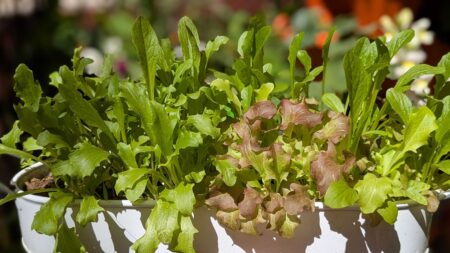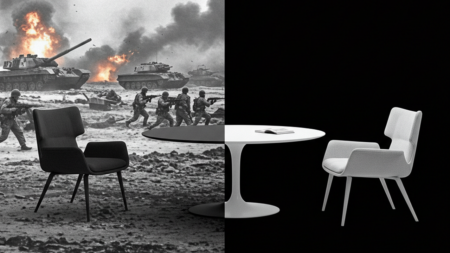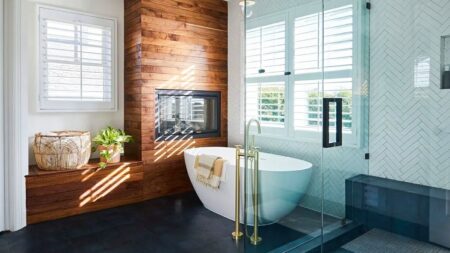Pergolas have become a favorite backyard feature with modern homeowners. Whether on TV sets or your favorite celebrity’s patio, these entertainment zones are rising in popularity for their versatility and aesthetic appeal. Pergolas are a great way to incorporate coveted features such as covered patios complete with custom outdoor kitchens, fireplaces, dining spaces, and so on. But many people still struggle with how to choose a pergola for their home as they fail to understand what exactly they need.
Well, if you are someone who wants a pergola for your home but is overwhelmed and does not know where to start, we have compiled the ultimate guide on how to choose an ideal pergola for your home. Let’s start at the beginning, shall we?
What is a Pergola?
A pergola is a wide-open structure with four support beams holding up a roofing grid. These architectural features usually have no walls to accentuate their nature as outdoor structures. Pergolas often have ornamental roof designs like a lattice, but they can be left open or covered to create an area protected from the elements.
Pergolas may be freestanding or attached to a house and vary in design and construction material. There are numerous additional touches you can add to your pergola to extend the level of comfort. For instance, you can add screens to it or have a louvered wall for added privacy.
Pergolas are typically used to highlight your backyard, but to link marquees and offer shade on open terraces. The most popular slatted roofs for pergolas allow sunlight into the space while providing some shade. These structures can be installed in your backyard, patio, and terrace or even on a balcony.

Pergolas can be attached to a house to expand your usable living space or detached for a comfortable outdoor entertaining area while enjoying nature. Contemporary pergolas are not constructed using brick or stone as in earlier ages; innovative materials such as weather-resistant aluminum are being used instead. But where did these structures originate from? Let’s find out.
Also Read: 10 Amazing Ways to Transform Your Patio into an Outdoor Oasis
Origin of Pergolas
Pergolas have stood the test of time through the millennia as the materials, styles, and names have evolved, making them more appealing. People have been wondering whether pergola’s popularity stemmed from its functionality or aesthetic, but we believe it’s both. The earliest sign of their existence put pergolas around 1400 BC as a remaining architectural plan shows the structure in the entryway to a garden in ancient Egypt.
In the olden days, pergolas were made of readily available materials such as wood, brick, and stone. To make them more embellished and increase the sheltered area, gardeners planted creepers and vines around the slats on the roof.
The affluent proportion of Europe built pergolas in their gardens and yards to relish the weather and spend time with their family and friends. Pergolas also offered shade for passageways between buildings and open terraces. The likes of Gertrude Jekyll and Sir Edwin Lutyens – one of the biggest names in European garden design – incorporated pergolas as their centerpieces in the late 19th and early 20th centuries.
Even one of the most significant periods of artistic revival, the Great Italian Renaissance, popularized the use of pergolas in the 17th century. However, this period was more interested in the beauty of pergolas than their functionality.
Elements of a Pergola
Now you understand what pergolas are and where they originated. But before diving into how to choose the perfect pergola for your home, let’s read about its components. Though they have different styles and materials, all pergolas have a few common parts. Here are the key elements of a pergola:
Columns: The pillars that hold the pergola’s roof and serve as a framework for outdoor living spaces. The numbers of these supporting columns depend on the size of the pergola and whether it’s freestanding or attached to a building.
Beams and Rafters: Beams and rafters are the slats that create the roof of a pergola. The beams are installed on the top of the columns and then rafters are positioned on top of the beams.
Stringer: Stringer, also known as purlins, is a series of parallel structures that goes on top of the rafters. They add shade to the area, but not all pergolas have them.
Ledger Board: The ledger board replaces the beam on the sides attached to the wall. It is the part that joins the pergola to the building.
Also Read: 14 Backyard Remodeling Ideas That’ll Liven Up Your Home
Types of Pergolas
Architecture is a fascinating art form, with so much to offer; so many designs, styles, materials, and shapes for a single structure. This is a statement true for pergolas, as well. Pergolas are created to enhance the landscape, increase the overall value of your home, and give you a place to relax and enjoy the great outdoors.
However, when choosing which type of pergola will suit your needs best, it can get overwhelming. Therefore, it helps if you familiarize yourself with how many types of pergolas there are to help you find the one suitable for your available space.
Freestanding Pergola
A freestanding pergola is a pergola that stands alone as a landscape feature, detached from your home. This type of pergola can be installed in your garden, alongside the pool, or to create an outdoor living space separate from the house.

Attached Pergola
An attached pergola is a feature that is attached directly to a wall of your home from one side. It is useful if you want to cover a space attached to the house, such as a patio or deck. It serves as an extension of an indoor room rather than a separate feature.

Arched Pergola
Aside from the attachment element, the roofs of pergolas define their type. An arched pergola features an arched top. It gives you a high ceiling and a more elegant and unusual design for the structure.

Louvered Pergola
A louvered pergola has flexible louvers as rafters instead of traditional slats. These louvers can be opened and closed to regulate the amount of sun you want inside the structure. Moreover, you can find both automatic and manual models of louvered pergolas.

Awning Pergola
The awning-style pergolas are structures mounted directly onto the wall and do not require support posts and columns. This type of pergola can be installed over a door, window, or garage for shade from natural elements and aesthetics.

Also Read: Tips to Transform Your Outdoor Space into a Backyard Oasis
Materials for Pergola Construction
The materials for pergola construction, like the types, vary quite a lot. Considering what material you want for the structure determines its durability, how much upkeep it will need over the years, and how much it will cost you. So let’s find out which of these popular six materials will be beneficial.
Wood Pergola
Wood is one of the most common and inexpensive materials for pergolas. Cedar pergolas are the most popular as they offer the most value for your money, while redwood is a more premium option. However, wood will need to be repainted or re-stained every few years to keep pests and rot away.

Aluminum Pergola
Aluminum is a great choice for a modern pergola frame. The material can be morphed into simple shapes and clean lines that pair well with contemporary architecture and landscaping. Aluminum does not require much maintenance as it is not vulnerable to corrosion.

Vinyl Pergola
Unlike wood, vinyl pergolas are quite low-maintenance. They can endure for many years with mere sporadic pressure washing. But there is one downside of using vinyl as construction material. It might be durable and low-maintenance, but high-quality vinyl is pretty expensive.

Steel Pergola
Steel pergola has a modern look. The material features a more industrial, heavy-duty form than aluminum and can withstand natural elements without sustaining much damage. On the other hand, this strong and sturdy material can rust if you fail to take precautions.

Fiberglass Pergola
A fiberglass pergola is weather-resistant, low-maintenance, and durable. You can paint it over easily to match it with your landscape. The material doesn’t corrode or rust, which means that you don’t have to subject it to regular treatment or cleaning. While it has a lot to offer, a fiberglass pergola can also be quite expensive.

Concrete Pergola
Concrete has become a popular material. If you want an industrial look, precast or custom-poured concrete pillars can give your pergola a classic look reminiscent of Ancient Greece or Rome. The material will last forever and needs only occasional cleaning and repairing of cracks and chips.

Benefits of a Pergola
The abovementioned points should be enough to clarify what a pergola is and what options you have if you want it to include in your home. But, do you know that a pergola has numerous benefits, too? Here are the five basic advantages a pergola will offer to your property.
A Comfy Outdoor Room
A pergola creates an outdoor room that provides a sheltered or semi-sheltered entertainment zone for seating, outdoor cooking, or barbeque space. A pergola can add an aesthetical structure to your outdoor living area without entirely blocking the breeze or sunlight. It means that you can enjoy the offerings of the outdoors without losing the comforts of indoors.
Cover a Patio
Aside from the protection from natural elements, an attached pergola can make your patio feel like a new room instead of just a separate outdoor space. You can add complementary patio furniture to make the space more comfortable and create a cozy nook for reading, eating, or small get-togethers with family and friends.
Also Read: How Wood-Fired Hot Tub Works and Things to Consider Before Buying One
Shelter a Swimming Pool or Hot Tub
A pergola is a great way to shelter a swimming pool or hot tub from the elements. It will also help in landscaping and offer some privacy while making it look more inviting. A pergola will be a low-maintenance solution if you want to increase the appeal of your swimming pool area. It will protect the space from leaves and other debris that may have you filtering now and then.
Elevate the Garden Design
As an outdoor feature, a pergola can add an exhilarating architectural element to a simple garden design, all without hindering the sunlight and rainwater plants need to survive. You can even include hanging plants and climbing vines to your pergola to elevate the design. Your garden pergola will not only be pleasing to the eye but add to the overall value of your house.
Shield a Walkway
Other than being an extension of the house, a pergola can be a frame for the walkways. It will bring a whimsical experience and protect the walkways winding through your garden or front yard from natural elements. You can increase their appeal by including climbing vines to cover the sides and roofs.
Cost of a Pergola
Once you know how to choose a perfect pergola for your space, you must settle on the budget. The cost of a pergola depends on the size and the type of material you are using for the construction. The cost of building a pergola ranges between $2,300 and $6,000, $4,200 on average. You can spend as little as over a thousand dollars if you want something basic, or can go up to $10,000 for a custom pergola. The cost of a pergola also depends on how much you are willing to spend.
Different materials can vary the cost of your pergola. For instance, cedar wood costs somewhere between $25 and $35 per square foot and pine costs $20 to $30 per square foot and teak costs $55 or more per square foot. Aluminum, on the other hand, costs $10 to $30 per square foot, on average. If you want something exceptionally strong and lightweight, fiberglass is your friend, but you will have to loosen the purse strings a lot as it costs $60 or more per square foot.
While the material is a considerable factor in determining the overall cost of your pergola, the size of the structure is also a key element. Consider this: the larger the pergola, the more material you need and consequently, more money to spend. For instance, a 10×4 feet pergola can cost somewhere between $1,200 and $2,400, while a 10×20 feet structure can cost you between $6,000 and $12,000.
Frequently Asked Questions
Q: What is the best place to build a pergola?
A: Pergolas are extremely versatile structures as they can be placed almost anywhere you want. You can build a small pergola on your patio, or a larger one in the backyard. However, the common places for installing a pergola are over an outdoor dining area, side of a pool, next to an outdoor fire pit, or over a hot tub. You can even construct them over a pathway.
Also Read: 30 Outdoor Fire Pit Designs to Get Ready for Fall
Q: What’s the difference between a pergola and a gazebo?
A: Many people use the terms pergola and gazebo interchangeably, but they are not the same thing. Gazebos are usually round structures and solid roofs, while pergolas are square or rectangular with slats and rafters instead of a solid ceiling. Moreover, pergolas can be attached or detached from your home, while gazebos are always a freestanding feature.
Q: Which is cheaper: buying or building a pergola?
A: You must consider value versus cost before you decide whether to buy or build a pergola, but a DIY job is cheaper than hiring a professional for the task. If you are building it yourself, a 10×10 pergola kit will cost you about $700, while a professional may charge an average of $3,500 for the same job.
Q: Why are pergolas so expensive?
A: The reason for these architectural features being so expensive is the material, which is worth it. As these outdoor structures must endure natural elements, they must be made from high-quality, durable materials such as metal or strong wood like cedar or teak. While these materials can be expensive, they will make your pergola durable and long-lasting.
Q: Do pergolas need a building permit?
A: Generally, pergolas do not need a building permit, but it depends on the location where you live. Before you commit to the project, you might want to check with your state, county, or municipality to find out whether you need a permit or not. Moreover, if your neighborhood has a Homeowner’s Association (HOA), you need to ensure you’re following HOA’s regulations and approval process if there is one in place.
Q: Do pergolas blow away in high winds?
A: Unfortunately, if it is not properly attached to a foundation, a pergola is vulnerable to being blown away by forceful winds and bad weather. A pergola without foundation will cause a lot of property damage in such conditions.
Q: How much will a pergola cost?
A: The price of your pergola will depend on the size, material, and design you are using for the construction. The cost of your pergola can range anywhere from $500 to over $5,000.
We hope this guide on how to choose a pergola for your home will help you make an informed decision. Have fun with this home improvement project!
Follow Homecrux on Google News!




